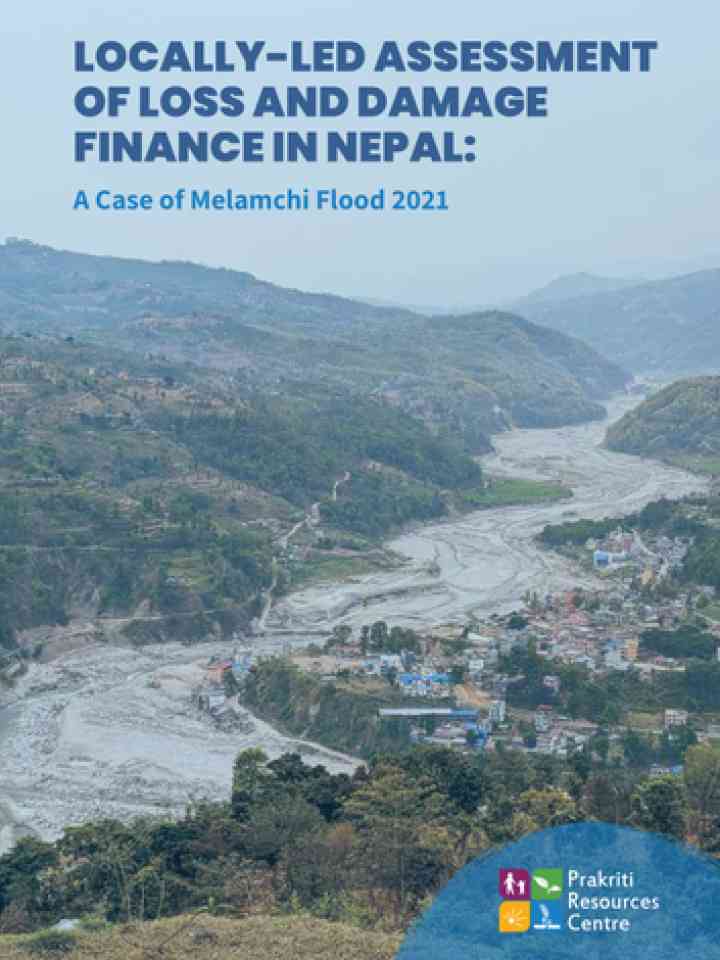Locally-led assessment of loss and damage finance in Nepal: a case study of Melamchi flood 2021
As the consequences of climate change become more severe on a global scale, the extent of associated loss and damage continues to rise. These events entail significant economic and non-economic losses, including loss of lives, infrastructure, livelihoods, and ecosystems. Particularly, communities and individuals in developing countries, such as Nepal, suffer through disproportionate impact due to their high vulnerability, geographical remoteness, dependence on climate-sensitive sectors, and limited adaptive capacities. Ineffective policy implementation, unavailability of compensatory mechanisms, and insufficient political commitment further increase the risk compounded by existing socio-economic inequalities. This report presents the findings of a study on loss and damage resulting from the Melamchi flood of June 15, 2021.
The flood resulted from a combination of anthropogenic and climatic factors that occurred along the Melamchi River Basin. Triggered by intense precipitation upstream, the flooding led to cascading effects along the river channels, resulting in a complex interplay between landslides, river damming, and debris deposition. The findings are drawn from an extensive field visit in the Helambu Rural Municipality and the Melamchi Municipality. The study has documented lived experiences of loss and damage from 14 key-informants, six indepth case analysis, six community-level focus group discussions, two municipal consultations, and 120 households survey. Respondents included 46% female and 54% male from diverse ethnic backgrounds. The household survey and municipal consultation analysis illustrate that economic loss per household amounted to USD52,113 (2023). But on average, each household received only about USD380, with some as little as USD76 while others as much as USD3,800 for reconstruction.
Explore further
